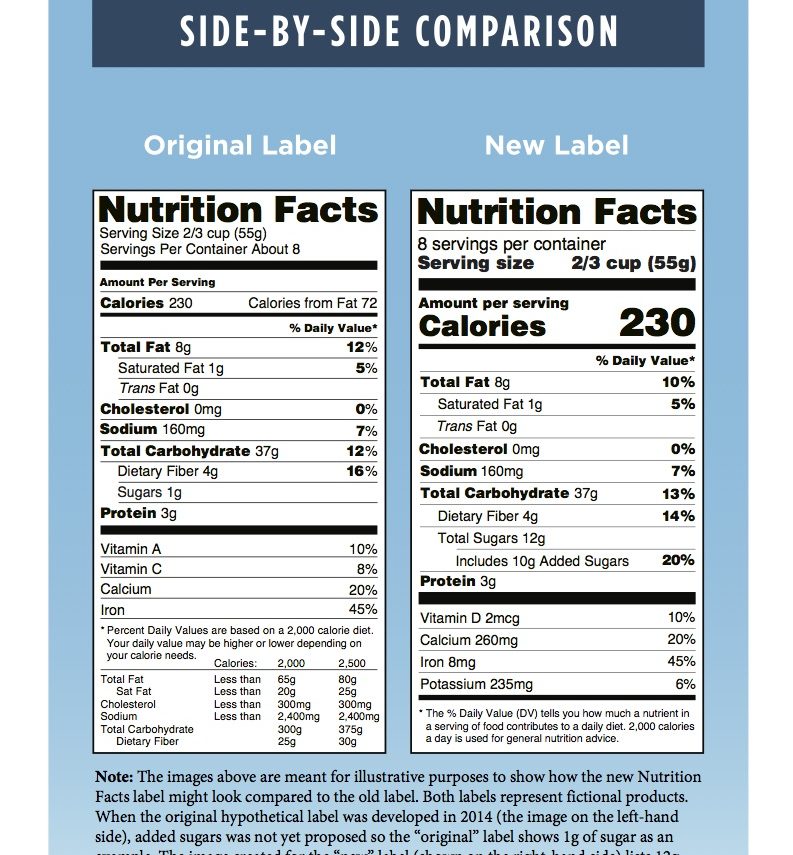Food Labels Are Finally Going To Make Sense, Here’s What’s Changing

It’s something that we’ve all seen on the side panel or on the back of a package, which is supposed to tells us exactly what’s in our food. From the calorie count, to the serving size and then the list of unpronounceable hodgepodge of additives that sometimes makes us question every bite.
Now, for the first time in more than two decades, nutritional labels on food are getting redesigned.
Some people live their lives by way of the nutritional information, while others just don’t pay attention. But, the Food and Drug Administration wanted to improve nutritional information listed on food items, “to reflect new scientific information, including the link between diet and chronic diseases such as obesity and heart disease,” according to its website.
In order to reinforce this, “new scientific information,” the FDA is taking steps to reduce the complexity of understanding exactly what the label information actually means for consumers.
Here’s a comparison image highlighting the changes, which are estimated to take effect for manufacturers July 28, 2018.
 Some changes are almost automatically noticeable. But, as you look deeper, the changes are pretty significant.
Some changes are almost automatically noticeable. But, as you look deeper, the changes are pretty significant.
In total, there are four categories of changes that will take effect. In terms of the actual label design, text size increases for serving size and calories, including, servings per container and, according to the FDA, “the footnote is changing to better explain what percent Daily Value means. It will read: “*The % Daily Value tells you how much a nutrient in a serving of food contributes to a daily diet. 2,000 calories a day is used for general nutrition advice.”
The new labels will also use updated information concerning nutritional science in terms of added sugars and other dietary protocol which reflects 2015-2020 dietary guidelines for Americans.
The consumption category will redefine serving and package size information, which has not received an upgrade since 1993. The FDA hopes that people will become more aware of what they eat, not just what they are eating, but how much.
“By law, serving sizes must be based on amounts of foods and beverages that people are actually eating, not what they should be eating,” according to the FDA website.
These changes will take time and some may still be unaware. But, on May 20, First Lady and fitness enthusiast, Michelle Obama, announced her excitement about the upcoming changes via twitter.
“You’ll no longer need a microscope—to figure out whether the food—is actually good for your kids.” —FLOTUS on the new #NutritionFacts label
— The First Lady (@FLOTUS) May 20, 2016






















